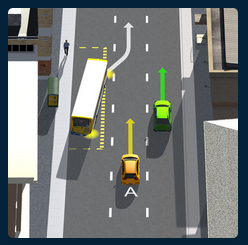Giving way
You must give way to all other vehicles and signal for at least 5 seconds when you drive on to the road from a parked position on the side of the road or in a median strip.
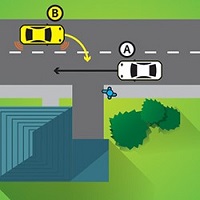
When you are entering or leaving a road from private property or a driveway, you must give way to pedestrians or bicycle riders on the footpath or road.
You must also give way to any vehicles on the road you are entering. These rules apply whether you are driving forward or in reverse.
In both examples, Vehicle B (yellow) must give way to Vehicle A (white) and the pedestrian about to cross the driveway.
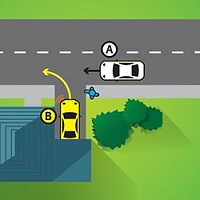
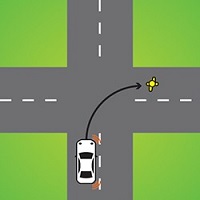
You must give way to pedestrians on or entering a road you’re turning into or entering. This includes pedestrians or bicycle riders that are crossing on the green ‘walk’ signal at an intersection controlled with traffic lights, and you are turning into the road they are crossing.
In both examples, the white vehicle must give way to the yellow pedestrian crossing the road.
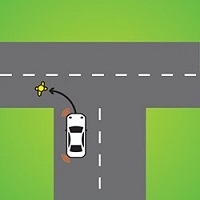
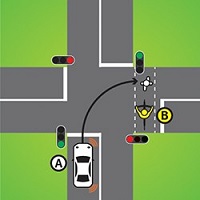
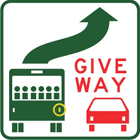
Buses, like all other vehicles, are required to indicate for 5 seconds before moving off from a parked position, which includes a bus stop.

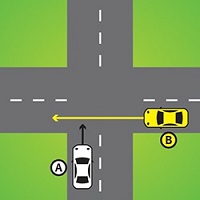
In this example, Vehicle A (white) must give way to Vehicle B (yellow).

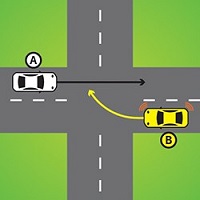
– driving straight ahead through the intersection
– turning left at the intersection.
In both examples, Vehicle B (yellow) must give way to Vehicle A (white).
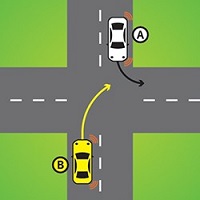

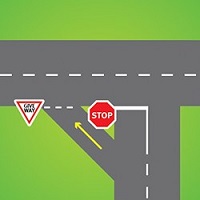
A slip lane is an area of road for vehicles turning left that is separated from other parts of the road by a painted island or traffic island.
If you’re using a slip lane, you must give way to all traffic already on the road you’re entering (except vehicles doing a U-turn).




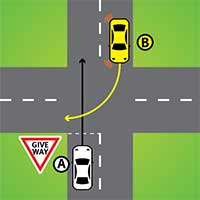
In this example, 2 vehicles are opposite each other at an intersection. Vehicle B (in yellow) is turning right across the path of vehicle A (in white) who has a give way sign.
Vehicle A (white) must give way to vehicle B (yellow) because vehicle A has a give way sign.


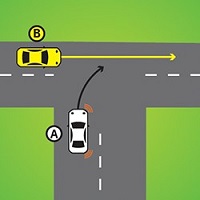
In this example, Vehicle A (white) must give way to Vehicle B (yellow).

Keeping Right clear




Overtaking
You can only overtake another vehicle if you have a clear view of any approaching traffic and you can do so safely. Make sure all road markings and signs allow you to overtake.
You can only overtake to the left of a vehicle if it is safe to do so and:
- you are driving on a multi-lane road and the vehicle can be overtaken in a marked lane to the left of the vehicle
- the vehicle is turning right or making a U-turn from the centre of the road and is indicating right
- the vehicle is stationary
- you are lane filtering on a motorcycle.
It is never legal to exceed the speed limit to overtake another vehicle.

warning for drivers that traffic will need to merge with traffic
in the continuing lane. You must also give way to any vehicle
in the lane you are moving into. It may not be safe to overtake
when you are in the left hand lane and you see these signs as
your lane will be ending soon and you may not have enough
space to overtake.

including drivers of slow moving vehicles, to keep in the left
lane, allowing other vehicles to overtake them in the right
lane. All vehicles must keep to the left lane unless they are:
• overtaking
• making a right hand turn
• avoiding an obstruction
• driving in congested traffic
• driving in a special purpose lane they are allowed to be in.

These signs advise motorists of an upcoming overtaking lane.
They increase road safety by allowing motorists to relax their
search for an informal overtaking opportunity, knowing that a
dedicated overtaking lane is approaching.
Sources:
https://www.qld.gov.au/transport/safety/rules/road/left
https://www.youtube.com/watch?v=lkNjM4gfV9k
https://www.youtube.com/watch?v=OFKG8PmoJHg
